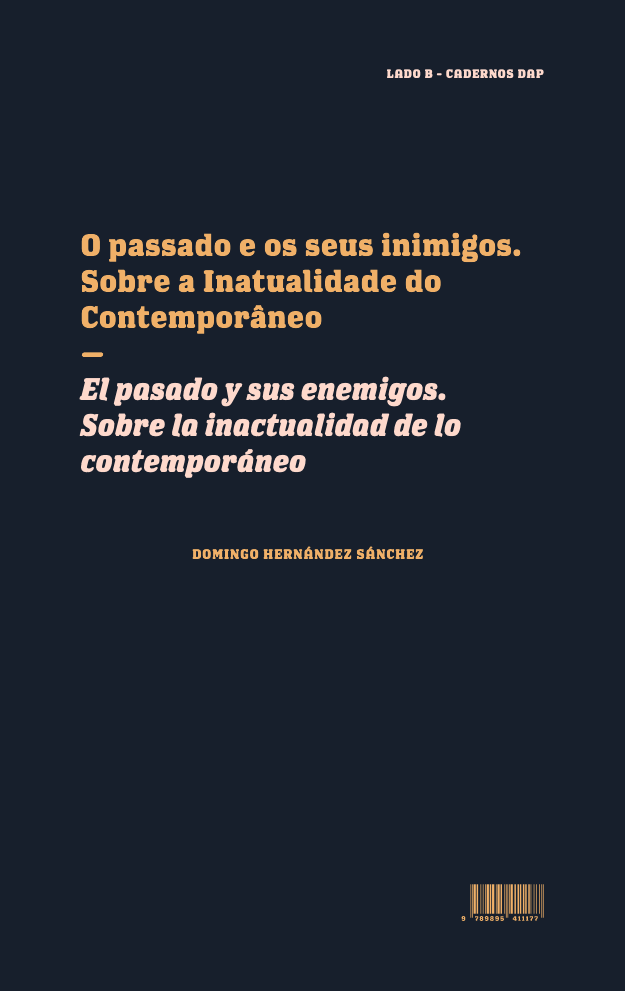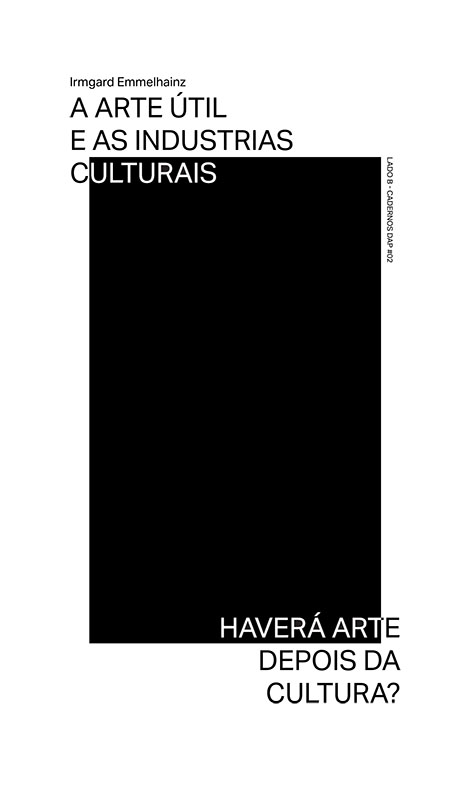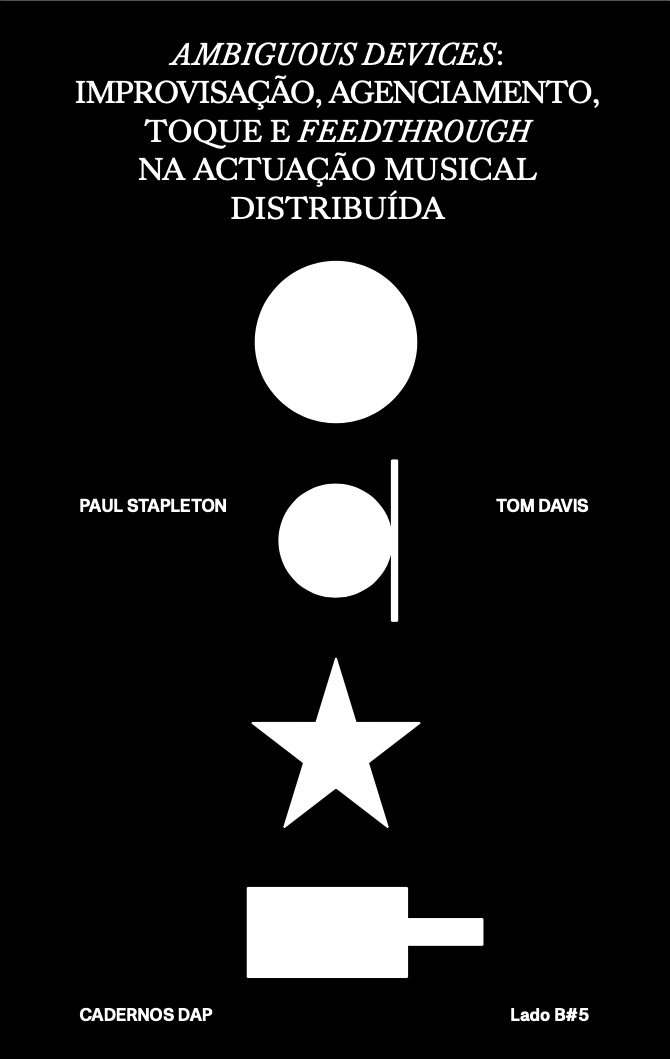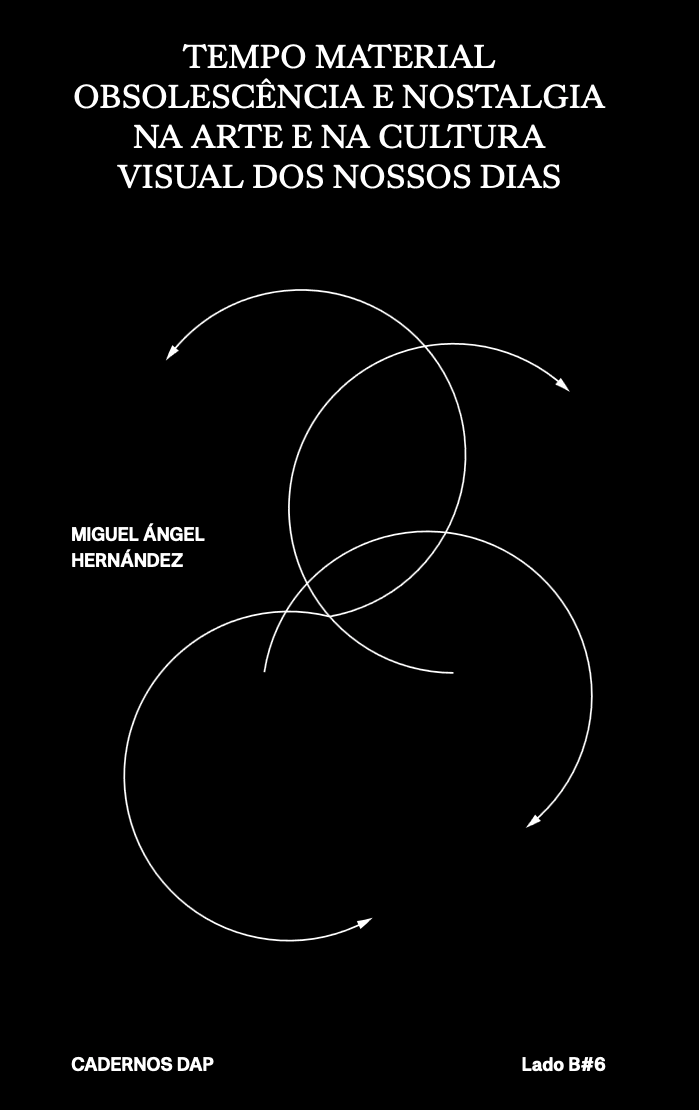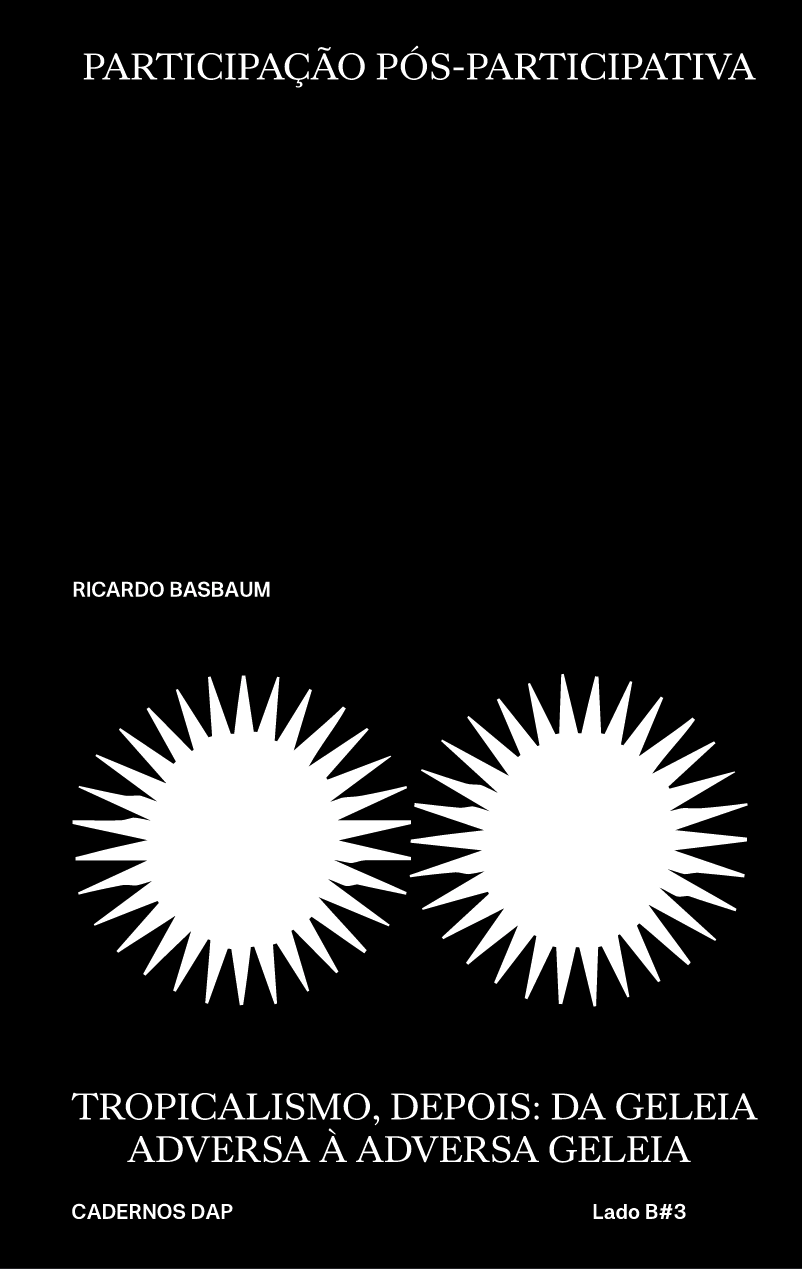
book
Lado B #3 — Ricardo Basbaum
Este volume transporta-nos para questões da maior importância para todos aqueles que se interessam pela prática e pelo pensamento em torno da chamada arte contemporânea.
We have finally arrived at the third volume of the collection “lado B” [“side B”], a fruitful and necessary collaboration of the Doctoral Programme in Fine Arts with the Research Institute in Art, Design and Society (i2ADS).
In this new volume, the important Brazilian artist Ricardo Basbaum (who, like the previous authors, kindly gave his text to this collection) carries us, through two of its many texts, towards incredibly important questions to all those who care about practice and thought around the so-called contemporary art.
Unlike the previous ones, this volume privileges a condition, that is of the utmost importance for the Doctorate in Fine Arts as well as for i2ADS. These are texts written by an artist, and this condition alone would be decisive for the objectives of the collection. However, the dimension of this choice is stronger and wider. It embodies one of the most discussed questions in the field: what is the role to be played by artists in contemporaneity? What are the limits that they must impose? And, finally, what singularities may these texts, written from the inside out of the territory of artistic practice, bring? These are all open questions, but, also, because of that, enhancers of broader horizons with which we want to work and deal.
The texts that are now presented have also another important dimension in the, also, fundamental, contemporary discussions: they come from the southern hemisphere, they come from a country that still has open wounds that derive from its previous condition as a colony, but, above all, from a gaze that escapes the cultural centrality with which we are used to living. These are, after all, generic questions because the most important ones are posed by the artist in his texts. Straight away, the problem of participation and so-called participatory art and all the mistakes that it has generated over the past few decades. The in-depth and singular analysis that Ricardo presents to us is beyond any misunderstanding. He knows what he means when he talks about participatory art. He situates the problem based on a historical research that allows an understanding of the visible approximation in our days between the territory of art and the cultural industry. He rightly feels that this approach and, in some cases, almost fusion, takes refuge in myths and misunderstandings enhanced by a more than spent rhetoric of criticism of the individualism of the artists. Coming from the most profoundly individualistic sectors of society: neo-liberal theorists who present a kind of anarchism external to any collective cause, but which on an individual basis allows them to offer myriads of saving pos- sibilities (more now with the introduction of the digital siege and the self-proclaimed telework). From the advertisements with any tanned and well-nourished figure doing their job on a paradise beach to the extreme of what we already know as selfie-reality in which software for sharing allows us to touch up defects to appear perfect in front of others. He puts his finger on the wound when he raises the problems that are inherent to this condition of self-made man and the corresponding “participatory” possibility present in many works that claim this condition, forgetting that the symmetry between author and viewer is just another fallacy.
The author rightly refers at the end of his text “Today’s most interesting artistic practices can take us closer to that paradox: to mobilize the other as an extension of yourself and to mobilize yourself as an extension of the other – where otherness is mutually reinforced and where ‘me’ and ‘you’ are continually replaced by a wide, outer area of contact. What can we do but live outside ourselves?”
Not by chance, the text that complements the book uses the same tools. Historical research and, right away, the refusal of this kind of social schizophrenia in which we are continually involved by the perpetual present that neoliberalism imposed on us, as a way of understanding this same present. Going back to the past, looking for examples of fundamental artists like Hélio Oiticica, will, therefore, be a powerful strategy for artists to be able to situate themselves and, as the author says, eventually find ways to resist so that the changes they crave in their works can appear, even if we can easily recognize that we are living in adverse times. And yet, as Derrida said, it is in the im-possibility that the challenge lies. The texts are there to help to understand the strangeness of the Derridean statement.
We finish exactly as in the previous presentation text. We know how difficult this is, but we also know that for artists, the make known of art is a necessity that we can, but we do not want to give up.
Fernando José Pereira
Como citar:
Pereira, F. J. (Ed.) (2020). Ricardo Basbaum. Participação pós-participativa. Tropicalismo, depois: da geleia adversa à adversa geleia. Lado B - Cadernos DAP, (3). i2ADS/DAP. https://doi.org/10.24840/978-989-9049-15-4
Sobre Lado B
Num passado que já parece longínquo, em plana vigência analógica, os grupos musicais pop editavam com frequência os chamados singles. Aí colocavam a música que lhe parecia mais talhada para o sucesso imediato e, logicamente, numa intencionalidade mainstream esta era divulgada e massificada intensamente. Como todos recordam os discos analógicos tinham dois lados (hoje aí estão outra vez…) um denominado A e o outro, denominado B. O carácter secundário do outro lado permitiu, também, que parte importante da experimentação avançada pelos intervenientes activos de então aí fosse colocada. A lógica era simples, só os mais curiosos e atentos iriam virar o disco e escutar o outro lado, o lado B. O tempo veio colocar em destaque toda essa vertente experimental e de risco. Não são raros os casos em que a recuperação se faz exactamente a partir das músicas impressas no lado B. O outro lado aparece, hoje, como o mais interessante, longe da assimilação e trituração comercial a que foram sujeitos os lados A. O seu distanciamento e natural obscurecimento perante os spotlights, apontados ao lado principal, preservaram-nos e trouxeram-nos até nós, hoje ouvintes digitais, como obras primeiras. A metáfora aqui apresentada pretende, antes de mais, ser um ponto de partida para uma reflexão mais aprofundada sobre a premência do deliberado afastamento a que se remetem algumas obras e textos. A sua permanência ausente da crista da onda (metáfora analógica, mas com intencionalidade digital) permite-lhes um grau de risco e de experimentação que não é passível de ser realizado em sistema de recepção mainstream. É sobre eles que queremos reflectir, sobre a sua necessária lucidez, que as protege e distingue da torrente de acomodação e deslumbramento, fundamento último para a sua existência enquanto obras ou textos que querem resistir à actual voracidade e velocidade do novo. Sem intuitos morais de representantes oficiosos de qualquer tempo ou tecnologia, apenas como obras ou textos.
